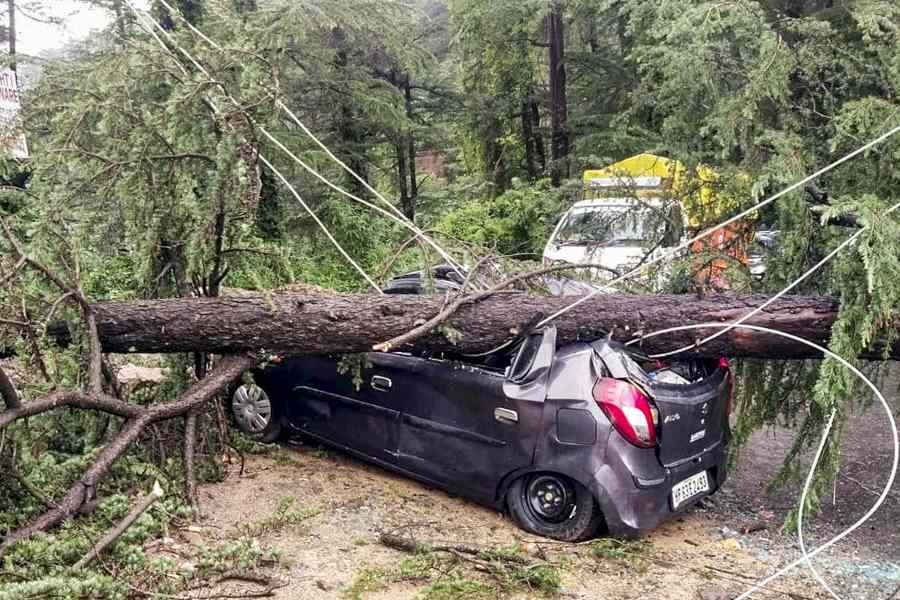New Delhi, April 30: The Chinese have demanded de-activation of two forward airstrips of the Indian Air Force in the region where their troops have crossed over and set up a tented camp in what India says is 19km inside its own territory.
Defence minister A.K. Antony today described the situation in Eastern Ladakh as “not one of our creation” but, he said, “we remain committed to a peaceful resolution of the situation, through military and diplomatic dialogue within the framework of the agreements for maintaining peace and tranquillity”.
The strategic import of the Chinese “intrusion” was discussed in high-level meetings of the security establishment today. Antony said at a scheduled Unified Commanders’ Conference of the military top brass that “there should not be any doubt that the country remains unanimous in its commitment to take every possible step, at all levels, to safeguard our interests”.
Antony said: “Our bilateral relations with China are, at times, bedeviled by border issues, particularly along the line of actual control.”
A defence ministry statement quoting him said: “The recent developments are no exception. Among the various initiatives to safeguard our border, the thrust has been on development of our border roads and advance landing grounds”.
The defence minister was later briefed by the National Security Advisor, Shiv Shankar Menon, who heads the China Study Group (CSG) and the chiefs of the army, the navy and the air force in a separate meeting.
In the deliberations within the military establishment, the import of the Chinese tented camp at Raki Nala near Indian posts there was a growing belief that Beijing’s troops had a grand design.
The Chinese military considers the re-activation of two advance landing grounds (ALGs) at Daulat Beg Oldi (DBO) and Fukche a threat because it increases the capability of faster deployment of Indian forces and in greater numbers.
None of the two airstrips can be used through the year for landing and take-offs by fixed-wing aircraft. But helicopters use them. DBO at nearly 16,500 feet is a remote post to which the road-link is tenuous at best.
But its strategic location gives Indian Air Force aircraft capability to take-off in the direction of both the Siachen Glacier – where Indian troops face the Pakistani army – and also towards the Karakoram and Aksai Chin, towards the Chinese forces.
DBO is 80km from Siachen. The location of DBO also allows the launching of platforms (such as unmanned aerial vehicles) to keep a watch on the Karakoram Pass, and the Khunjerab Pass through which the Karakoram highway runs between China and Pakistan.
China has huge investments in the Gilgit-Baltistan area of Pakistani Kashmir that India claims and their military engineers are known to be working there.
The re-activation of the DBO in May 2008 was a hush-hush affair by India.
“I remember that none of our families and the families of the crew could be told where we were heading and we talked about it only after returning to Chandigarh,” Air Marshal P.K. Barbora (retired) told The Telegraph this evening. He was the western air commander at the time (later retired as the vice-chief of Air Staff) and in the first fixed-wing aircraft, an Antonov 32, to land at the DBO in 43 years.
“I recall that the Chinese asked for a flag-meeting immediately and objected to the landing, but it was a political decision of the government to activate our forward landing grounds and we were executing it,” says Barbora.
In November that year, the IAF also re-activated Fukche, several hundred kilometres to the south east of the DBO. Unlike the DBO, Fukche has much better ground connections and is also at a lower altitude (about 14,000ft).
But, the aerial distance between Fukche and the Western Highway is less than 70km. With the Western Highway, China connects Xinjiang with Tibet in territory that India claims. A potential adversary’s airfield so close to the Western Highway increases China’s threat perceptions.











